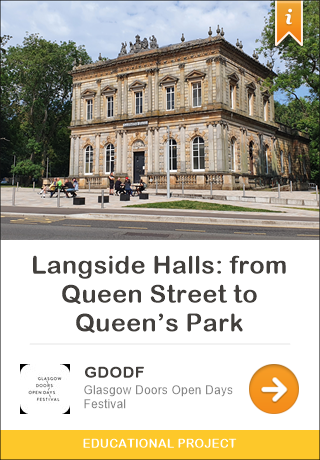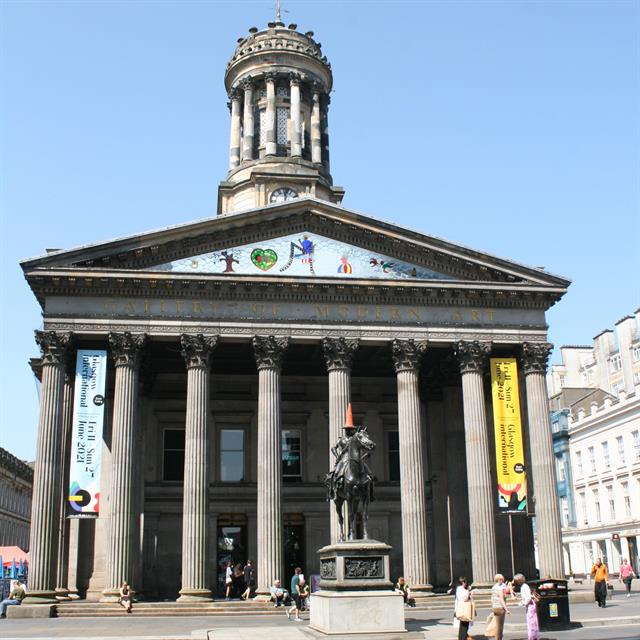Langside Halls: from Queen Street to Queen’s Park
and use it offline.Interactive multimedia guided tours on the go. Learn more


Originally built as a house for one of Glasgow's tobacco lords in the late 1820s.

The original site of Langside Halls (formerly the National Bank of Scotland).

James Miller's original ticket office building for the Glasgow Subway System.

Scotland’s first & largest purpose-built Mosque opened in May 1984.

Built in 1878, James Sellars' Citizens Theatre is the second oldest theatre in the UK

Former British Linen Company Bank building, designed by James Salmon Jr in 1887.

Built in 1879 for the Glasgow Parish School Board, designed by H&D Barclay.

A. Myles' Electrical Works was was built in 1900 for Glasgow Corp. Electricity Dept.

The hospital was built in the 1890’s & was designed by N. MacWhannel & J. Rogerson.

The building began life in 1893 as the city’s main tram terminus, depot and factory.

Built in 2013, the Glasgow Gurdwara is the largest Sikh temple in Scotland.

Nithsdale Mission Hall was built between 1887-1888, arranged by United Presbyterians.

Opening in 1888, it was the first church to be built in the “village” of Strathbungo.

The perfect opportunity to stop for a drink and some deserved rest on this tour.

Alexander 'Greek' Thomson's famous Moray Place, Strathbungo.

Camphill House was was built between 1800 & 1818 for Robert Thomson.

Following from Stop 2 at 57 Queen St - we explore the Hall's exterior & future plans.
Langside Halls began life on Queen Street in 1847 as the first National Bank of Scotland, it was then moved & re-built in 1902 to become a new public building at its current location at the corner of Queen’s Park.
Langside Halls Trust was formed in 2013 & its aims are to develop & secure funding to fully refurbish Langside Halls & bring it up to modern standards. The Trust’s vision for the Halls is as a “community space for hire” & a locally programmed venue for cultural, social & wellbeing activities to enrich the Southside community.
The Trust, with Hoskins Architects has created this tour to guide you on a journey from the Halls’ original site to their current location. Along the way is a series of stops demonstrate how buildings have adapted to suit the needs of their communities.
Walk or cycle this virtually guided tour in one go, or in parts; or simply enjoy it from the comfort of your armchair and look at each of the buildings in a new light the next time you encounter them.
 Working…
Working…